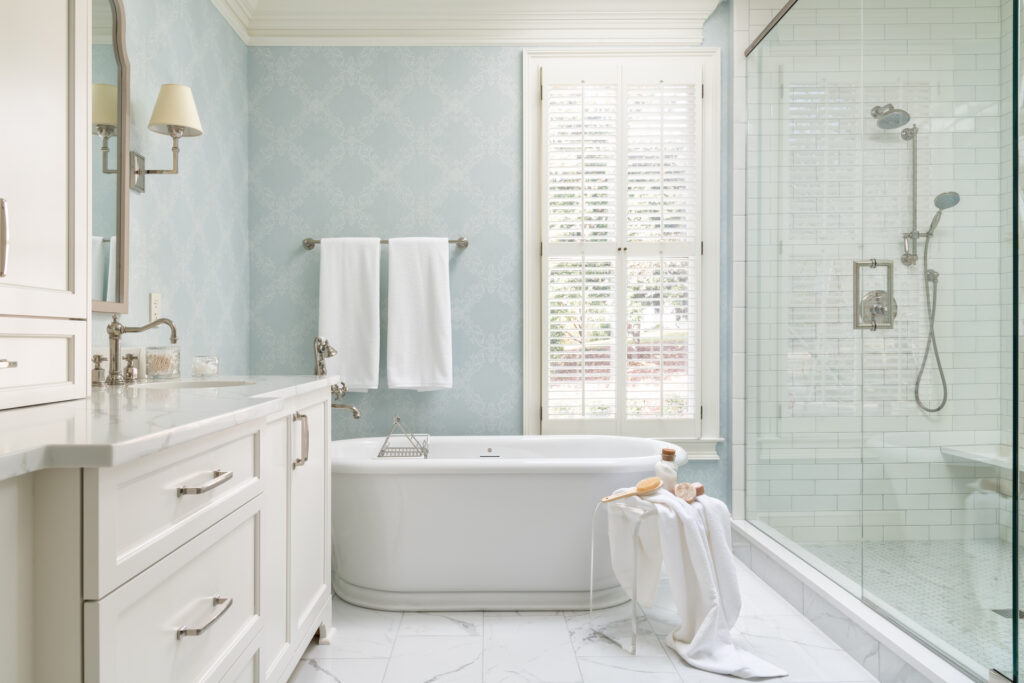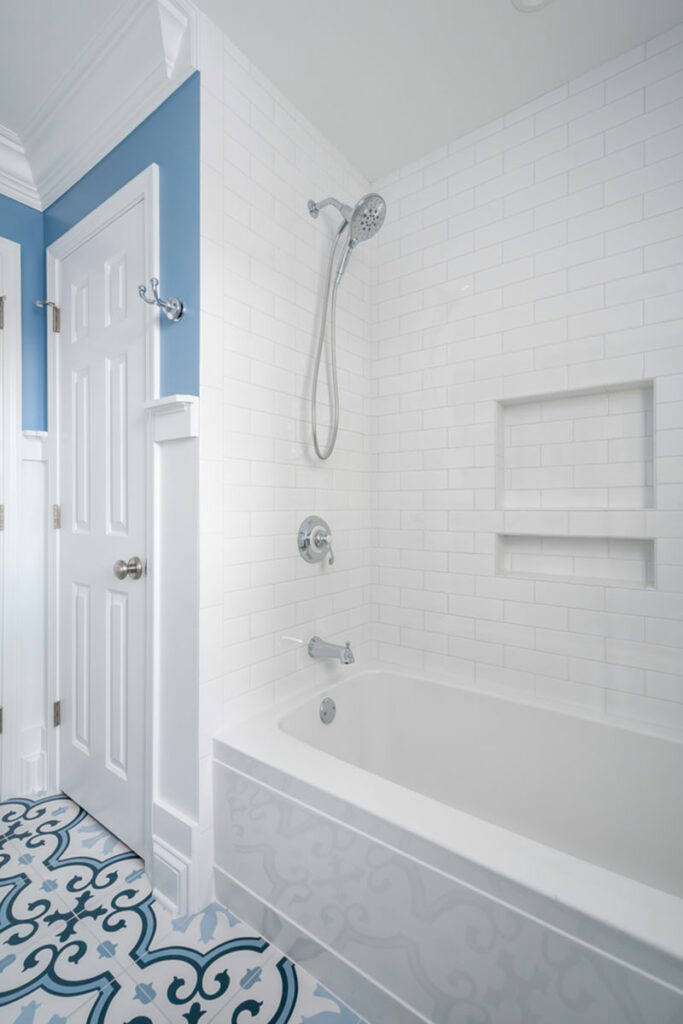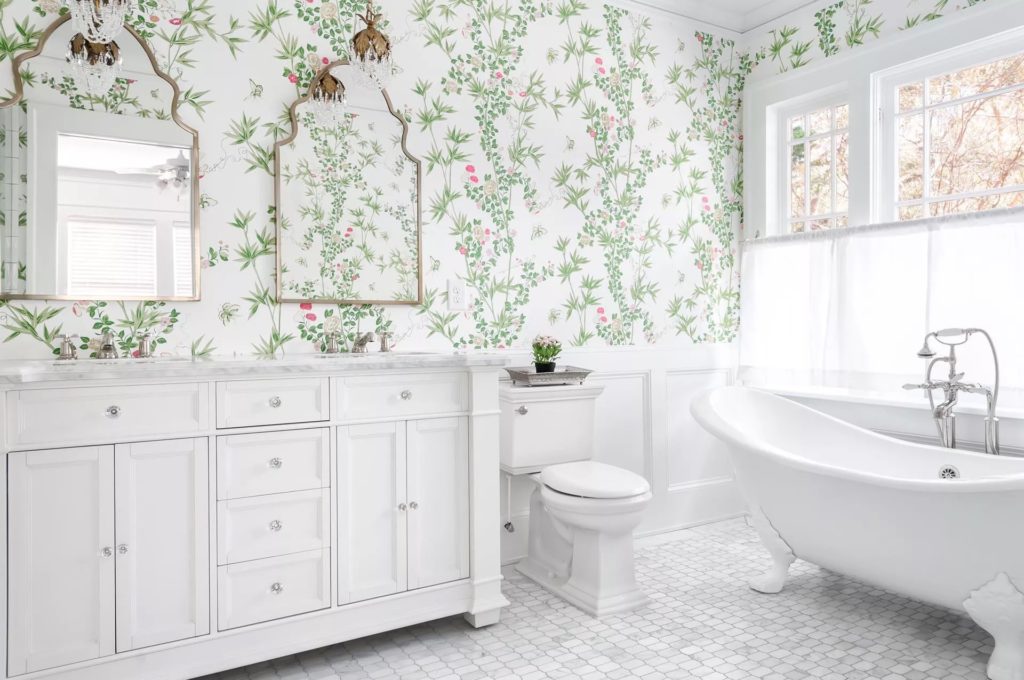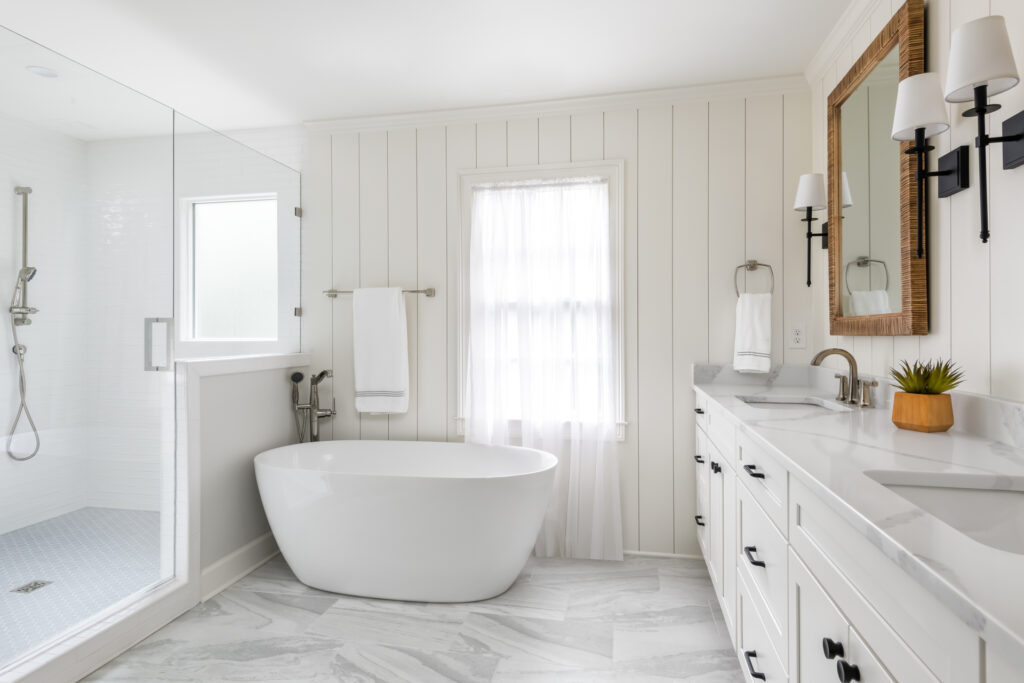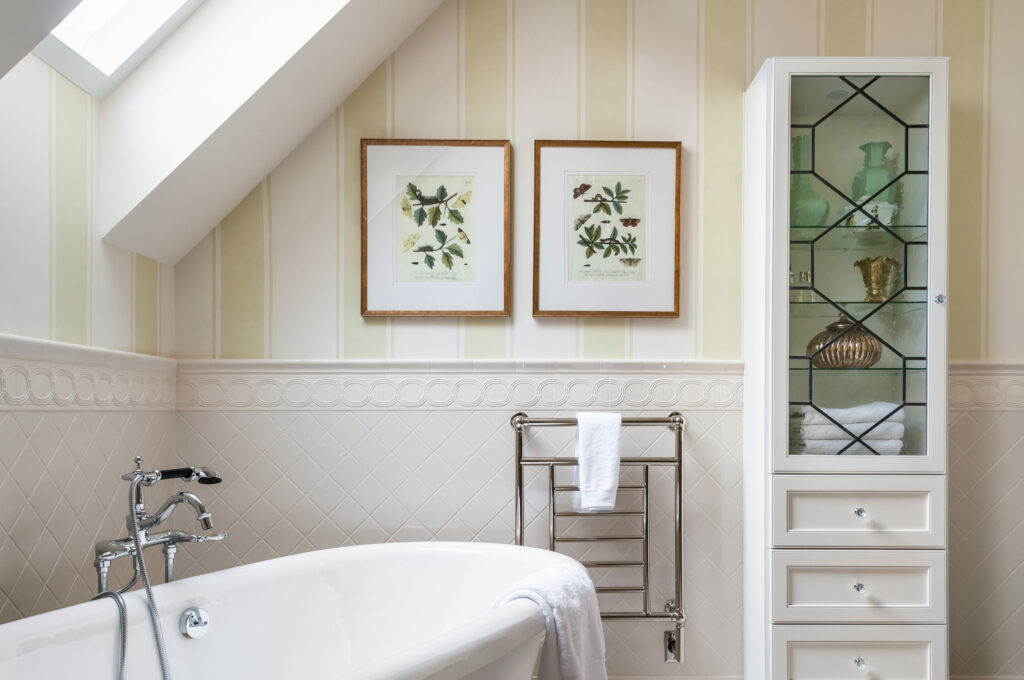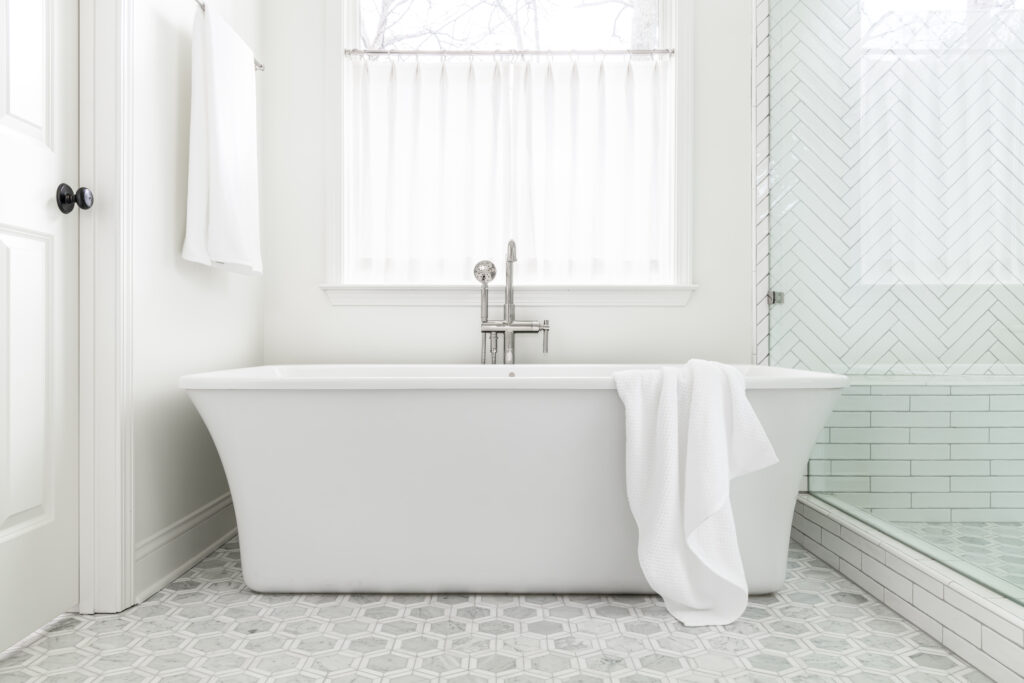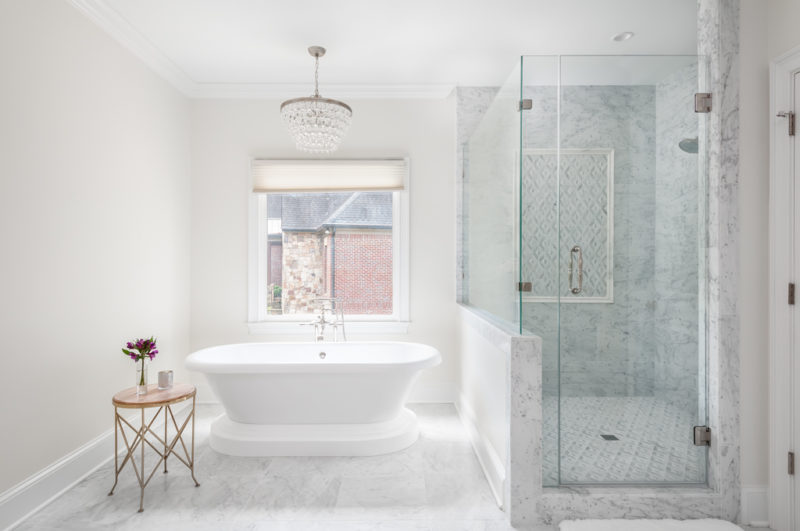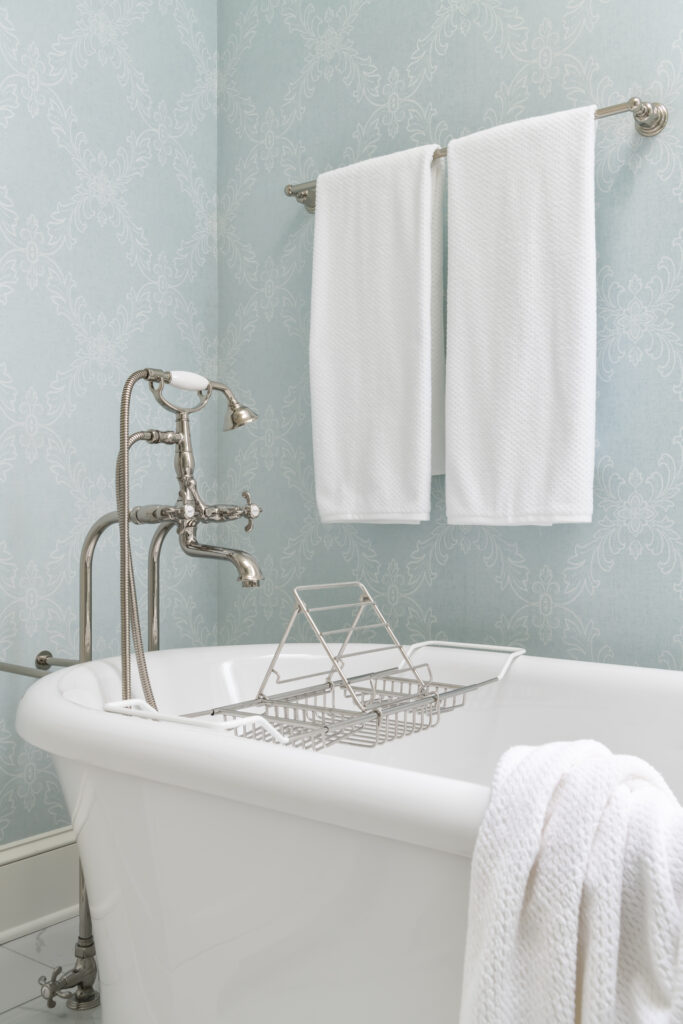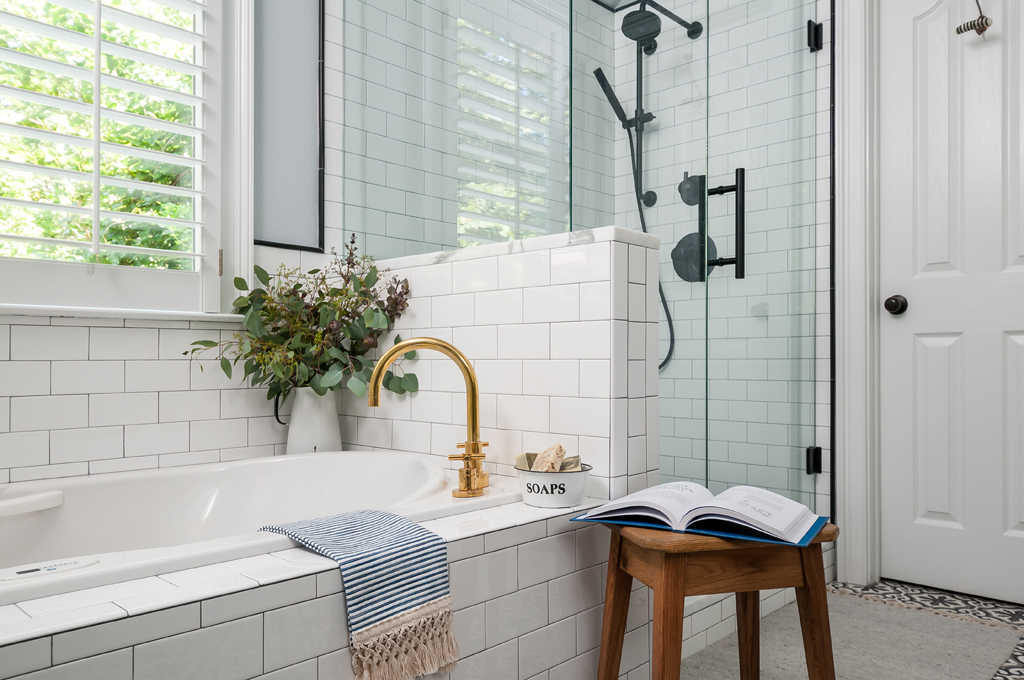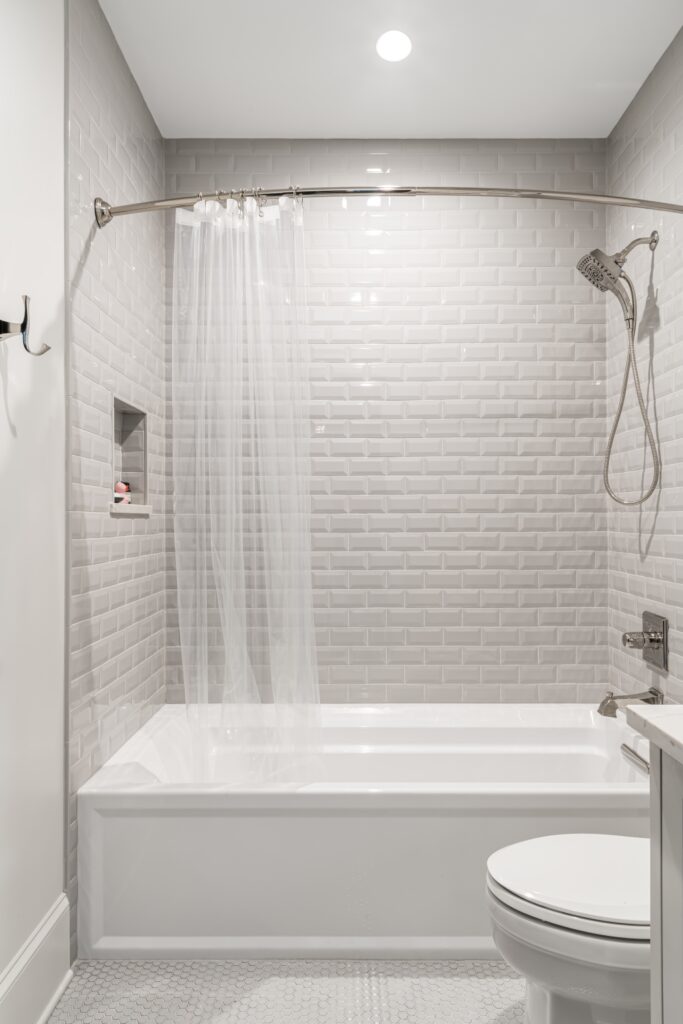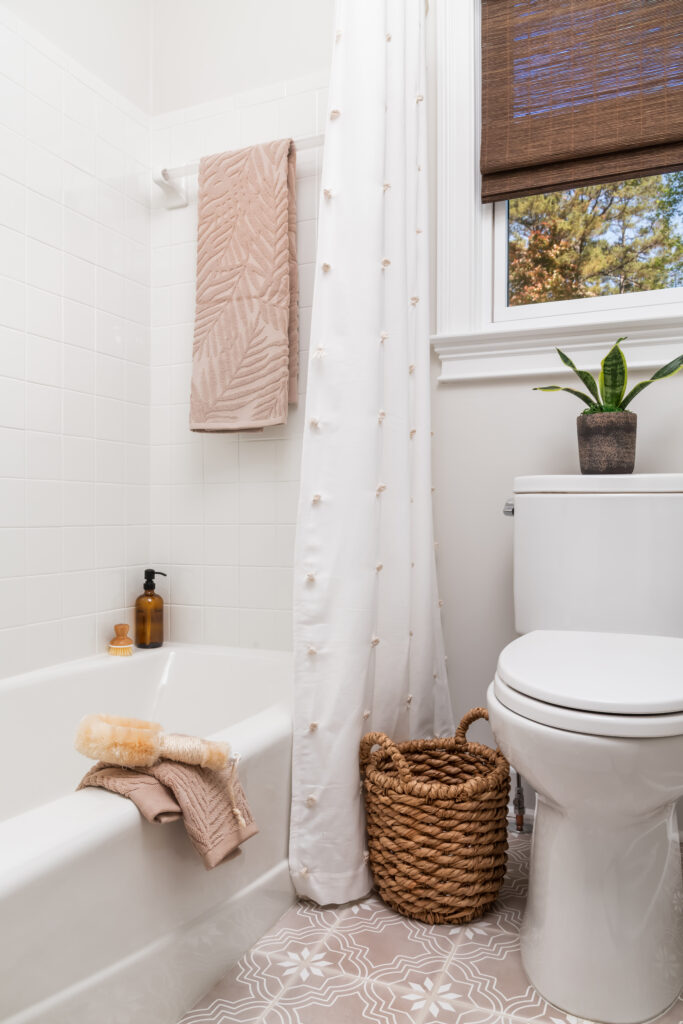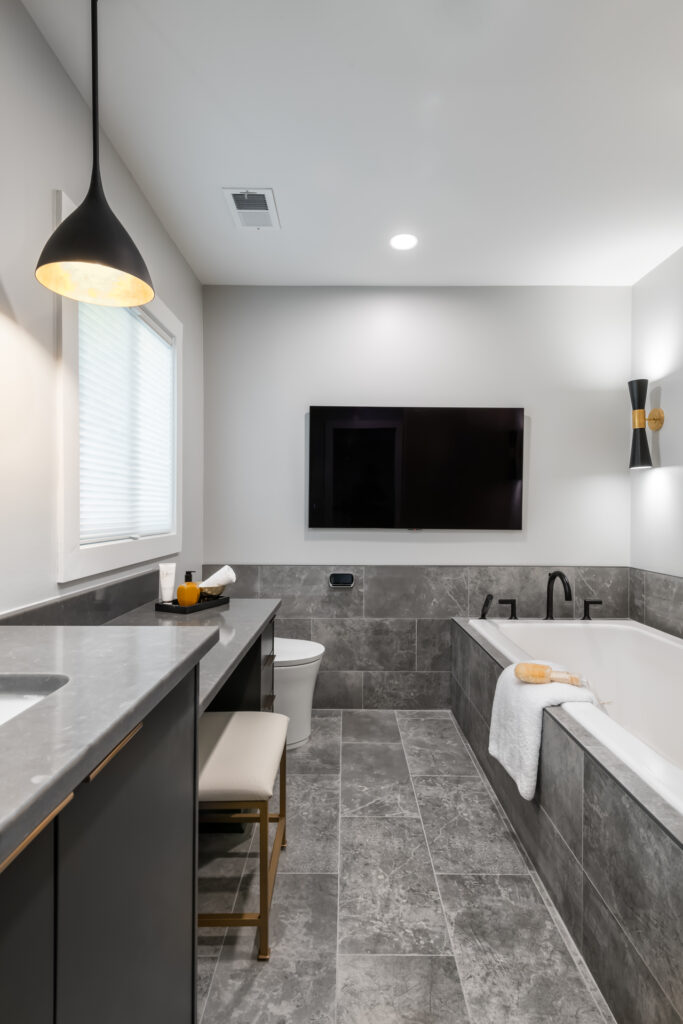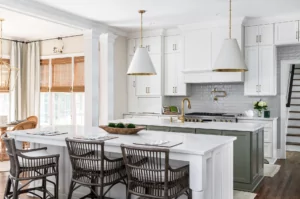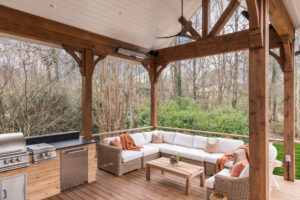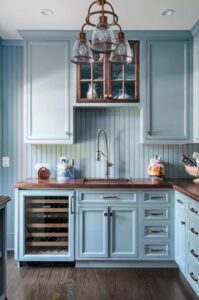Freestanding Tubs Versus Built-In Tubs
So many bathtub options, so little time! Let us help you start to narrow down your choices by taking a look at freestanding tubs versus built-in tubs. There are pros and just a few cons to each option. The key it to find out which type is the right choice for your home.
Freestanding Tubs Versus Built-In Tubs: Freestanding Tub Dimensions
The average size of a freestanding bathtub is 55 to 72 inches long by 27 to 32 inches wide. The height is usually between 15 and 20 inches. You’ll also want to leave at least 6 inches between the tub and any walls, a shower surround, vanity or toilet.
One important thing to note is the capacity of your hot water heater. Because unless you’re into cold plunge challenges, you’ll also need to consider if your hot water heater has enough capacity to fill your tub.
Freestanding Tubs Versus Built-In Tubs: Built-In Tub Dimensions
The average size of a built-in bathtub is 60 inches long by 32 inches wide The average height is 14 to 16 inches high. If you need one for a smaller space, they do come as short as 48 inches long.
Freestanding Tubs Versus Built-In Tubs: Advantages To Freestanding Tubs
Advantage 1: Versatile Style
If you’re trying to create a classic, traditional look, a freestanding tub is a good option. For example, this clawfoot tub is a throwback to the Victorian era. Our in-house designer helped these homeowners nod to that style with classic marble, a botanical wallpaper and a clawfoot bathtub.
Clawfoot tubs also make a bathroom feel more airy, because you can see the flooring continue beneath them.
This photo shows that a freestanding tub can have a clean, minimalist, sculptural shape that leans contemporary and modern.
Learn more about this bathroom renovation
Advantage 2: Space Saving
A freestanding tub can allow more possibilities within a layout. It doesn’t have to butt right up against a wall. And it doesn’t take up the space along a wall that a built-on tub’s surround does. One disadvantage to a freestanding tub is getting hard-to-reach places behind it clean.
In this room, using a freestanding tub allowed us to fit a generously sized shower stall and a bathtub in a way that didn’t feel squeezed.
Advantage 3: Depth
Freestanding tubs allow for a lot of depth too, usually more than you find in a typical drop-in tub. This mans you can soak up to your neck. This particular model is higher on one end for neck and back support.
Another type of freestanding tub that is gaining popularity is an Ofuro tub. This type of Japanese soaking tub is usually round, much smaller in circumference than a typical tub but is much deeper. It has a bench inside for seating inside the deep tub.
Many freestanding tubs are extremely comfortable. But we highly recommended hopping in at the showroom and making sure it feels just right for you before choosing a model.
Advantage 4: Beauty
You really won’t find the beauty in a drop-in tub like you will with a freestanding tub. It makes a statement, can provide a focal point and serves as a highly functional work of art.
And while there are plenty of lovely tub filler options for built-in tubs, nothing compares to the elegance of a floor-mounted freestanding tub fixture. There’s just more feet of gleaming pipes in a beautiful finish to admire. Of course, if you want a more minimalist look, you can opt for a wall-mounted tub filler.
Learn more about this bathroom
Freestanding Tubs Versus Built-In Tubs: Advantages To Built-In Tubs
First, a note about the different types of tubs:
A drop-in tub is a tub shell, and requires a surround around it. Often, this is millwork that matches the rest of the bathroom, or tile, like you see in this photo around the jetted drop-in tub.
An apron front, or skirted tub, has a finished side that is exposed. The tub below is an apron-front tubi(t can also be considered an alcove tub because it is surrounded by three walls). Apron front tubs are easier to install and require less customization than drop-in tubs. Often they can save you a bit on the budget over a tub that requires a full surround.
The term built-in tub covers both drop-in and apron-front tubs. It is a bathtub is installed against your bathroom walls and can be tucked into corners or alcoves.
Advantage 1: More practical for a Tub-Shower Combo
A built-in bathtub is a better option for a tub-shower combination. There’s more room underfoot, more space for products and a more seamless look. With a freestanding bathtub, there are awkward rods and a lot of futzing with the liner and shower curtain all around it.
If you plan to use your tub-shower combo for showering more than you plan to use it for bathing, we recommend a built-in tub.
Advantage 2: Clean Lines
Built-in tubs lend a very streamlined look. This apron-front bathtub has a clean, contemporary look. Built-in tubs now come in a variety of sizes to squeeze into tighter spaces. In this bathroom, we employed a wet room strategy to fit both a tub and a separate shower in a pleasing way.
Learn more about this bathroom
Advantage 3: Space Saving In Their Own Way
A tub-shower combo is the way to go in a small space when you want both but can’t fit them separately. This is a good option for a hall bath that kids share. You can opt for a glass enclosure or a shower curtain, depending on the tub you choose.
A shower curtain is always a fun way to incorporate a textile into a bathroom. For example, we love the pompoms on this one.
Learn more about this bathroom
Advantage 4: They Can Add Style
The freedom of customizing the side of a drop-in tub allows you to bring in additional details. Perhaps you’ll continue the floor tile or wall tile up the sides. Or maybe you want to add some panel-framed millwork or tongue-and-groove paneling to the room.
Learn more about this smart tech bathroom
We hope this article has helped you better understand freestanding tubs versus built-in tubs. If you’re not sure which option is best for you, our in-house interior design team will help you figure it out! If you are ready to remodel your bathroom or complete any other renovation projects, please give us a call to schedule a free consultation.
If you enjoyed this story, here are a few more we think you’ll like:
Aging In Place Bathroom Renovation
Also, keep up with our latest projects on Instagram and Houzz

